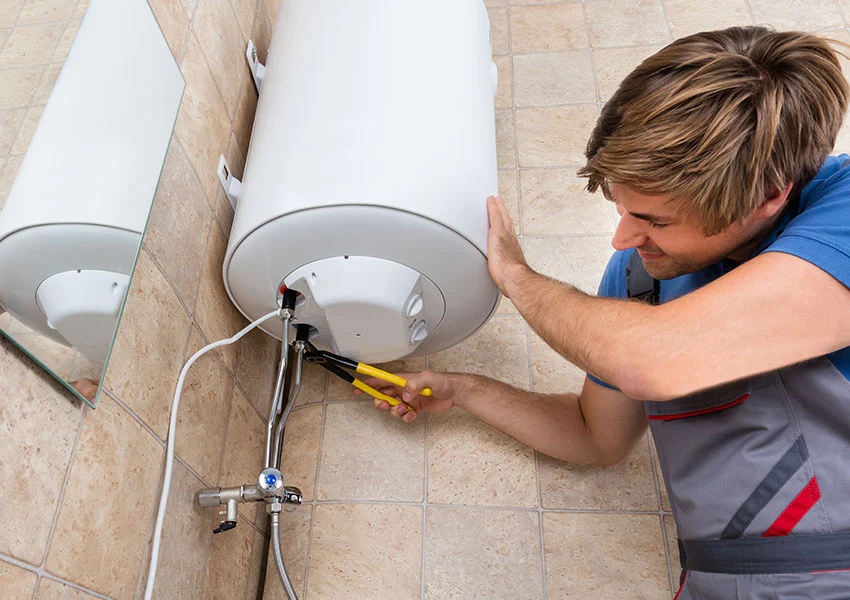Presented here further down you can get more worthwhile tips in regards to What Kind of Maintenance Do Water Heaters Need?.

Warm water is crucial for day-to-day comfort, whether it's for a revitalizing shower or washing meals. To guarantee your warm water system runs successfully and lasts longer, normal upkeep is essential. This article gives practical pointers and insights on just how to preserve your home's hot water system to avoid disturbances and costly fixings.
Intro
Maintaining your home's warm water system may appear complicated, however with a few straightforward steps, you can guarantee it operates smoothly for many years to find. This overview covers whatever from understanding your warm water system to DIY upkeep tips and understanding when to employ professional assistance.
Importance of Preserving Your Hot Water System
Normal maintenance not just extends the life expectancy of your warm water system however likewise ensures it operates successfully. Ignoring upkeep can result in decreased performance, higher energy expenses, and even early failing of the system.
Signs Your Warm Water System Needs Upkeep
Understanding when your warm water system needs interest can avoid significant issues. Look out for signs such as inconsistent water temperature level, strange noises from the heating unit, or rustic water.
Understanding Your Hot Water System
Prior to diving into maintenance jobs, it's handy to understand the standard components of your hot water system. Typically, this includes the hot water heater itself, pipes, anode rods, and temperature controls.
Monthly Maintenance Tasks
Routine month-to-month checks can aid catch minor problems before they escalate.
Flushing the Water Heater
Flushing your hot water heater gets rid of debris build-up, boosting effectiveness and prolonging its life.
Monitoring and Changing Anode Rods
Anode rods stop rust inside the tank. Evaluating and replacing them when broken is critical.
Inspecting and Changing Temperature Level Setups
Adjusting the temperature settings makes sure ideal efficiency and security.
Do It Yourself Tips for Maintenance
You can perform several maintenance tasks on your own to maintain your warm water system in leading condition.
Looking for Leakages
Regularly inspect pipelines and links for leaks, as these can bring about water damages and greater costs.
Examining Pressure Relief Valves
Evaluating the pressure relief valve guarantees it functions appropriately and avoids excessive pressure accumulation.
Shielding Pipelines
Protecting warm water pipes reduces warm loss and can save energy.
When to Call a Specialist
While DIY maintenance is valuable, some problems need professional knowledge.
Complicated Concerns Needing Professional Aid
Instances consist of major leaks, electric problems, or if your hot water heater is constantly underperforming.
Regular Expert Upkeep Conveniences
Professional maintenance can consist of comprehensive evaluations, tune-ups, and ensuring conformity with security requirements.
Final thought
Normal maintenance of your home's warm water system is vital for performance, longevity, and cost financial savings. By complying with these tips and understanding when to look for specialist assistance, you can ensure a reliable supply of hot water without unanticipated interruptions.
How to Maintain an Instant Hot Water Heater
- Before tinkering with your hot water heater, make sure that it’s not powered on. You also have to turn off the main circuit breaker and shut off the main gas line to prevent accidents. Also turn off the water valves connected to your unit to prevent water from flowing into and out of the appliance.
- 2. When you’re done, you have to detach the purge valves’ caps. These look like the letter “T†and are situated on either side of the water valves. Doing so will release any pressure that has accumulated inside the valves while at the same time avoid hot water from shooting out and burning your skin.
- 3. When the purge valves’ caps are removed, you have to connect your hosing lines to the valves. Your unit should have come with three hoses but if it didn’t, you can purchase these things from any hardware or home repair shops. You can also get them from retail stores that sell water heating systems. Read the user’s manual and follow it to complete this task properly. When the hosing lines are connected, open the purge port’s valves.
- 4. You should never use harsh chemical cleaners or solutions when cleaning your unit. Make use of white vinegar instead. It should be undiluted and you’ll probably use about 2 gallons.
- 5. Now flush your water heater. This task should probably take about 40 minutes. We can’t give you specific directions for this because the procedure is carried out depending on the type, model and brand of your heater. With that being said, refer to the user’s manual.
- 6. When you’re done draining the unit, you have to turn off the purge port valves again. Remove the hosing lines that you earlier installed on each of the water valves. Put the valve caps (purge port) back in their respective places and be very careful so as not to damage the rubber discs that are found inside these caps.
- 7. Now that everything’s back in place, check your user’s manual again to find out how to reactivate your water heating system.
- 8. Once it is working, turn one of your hot water faucets on just to let air pass through the heater’s water supply pipes. Leave the tap on until water flows smoothly out of it.
https://www.orrplumbing.com/blog/2014/september/how-to-maintain-an-instant-hot-water-heater/

As an avid person who reads on What Kind of Maintenance Do Water Heaters Need?, I assumed sharing that section was really helpful. Enjoyed reading our blog entry? Please share it. Help another person discover it. Thank you for taking the time to read it.
Call Today
Comments on “Effective Techniques for Caring for Your Home's Hot Water System”